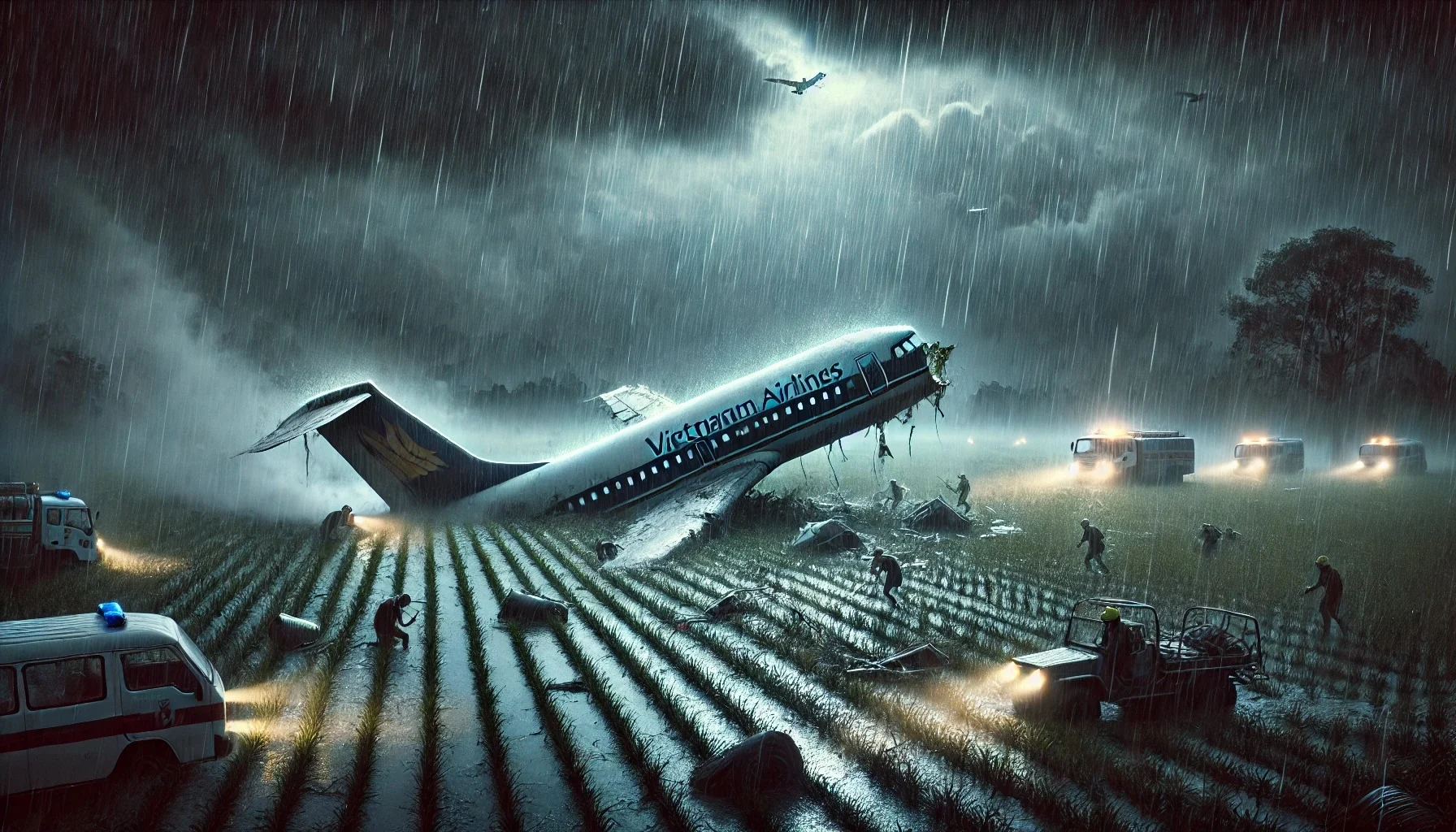
Vietnam Airlines Flight 831
by: The Calamity Calendar Team
September 9, 1988
On a stormy night in 1988, Vietnam Airlines Flight 831 departed Hanoi bound for Bangkok, Thailand. The aircraft, a Tupolev Tu-134A, was a symbol of Vietnam’s reliance on Soviet-era aviation technology during a time when the country’s infrastructure was still struggling to modernize. As the flight crossed into Thai airspace, it was buffeted by severe thunderstorms, which proved to be disastrous.
At around 10:40 PM local time, just as the plane was making its final approach to Don Mueang International Airport in Bangkok, something went catastrophically wrong. The flight crashed near Semafahkarm Village, approximately 2.5 miles from the runway.
Of the 90 people on board, including both passengers and crew, only 14 miraculously survived the impact. Among the wreckage scattered across a rice field in rural Thailand, rescue workers found a scene of devastation. Some passengers had died instantly, while others succumbed to their injuries in the aftermath of the crash.
Theories Behind the Crash
The investigation into the cause of Flight 831’s crash was inconclusive. The exact reason for the tragedy has never been determined, although several theories have emerged. Some experts believe the severe weather—particularly the turbulence and lightning—played a critical role, possibly causing a lightning strike that disabled the aircraft’s systems. Others suggest the aircraft’s approach may have been compromised due to poor visibility and outdated navigational technology aboard the plane.
Vietnam Airlines had been operating a fleet of Soviet-built Tupolevs during the late 1980s, but these aircraft were known for their aging systems and limited instrumentation compared to Western counterparts. The Tupolev Tu-134, in particular, had been prone to mechanical issues and was considered less safe by modern standards. Though weather was likely a significant factor, the technical limitations of the aircraft may have exacerbated the situation.
Aftermath and Legacy
Following the crash, Vietnam Airlines and Thai aviation authorities launched extensive rescue and recovery operations. However, the impact and the ensuing fire left the aircraft largely destroyed, with few clues as to what exactly caused the crash. The Thai government worked closely with Vietnamese authorities to recover bodies and provide support to the victims’ families. Despite these efforts, many families were left without clear answers as the official cause of the crash remained undetermined.
Thanks for subscribing!
This incident marked one of Vietnam Airlines' worst tragedies and sent a clear signal that Vietnam’s aviation sector needed significant modernization. The crash highlighted the risks associated with aging fleets and outdated technology, pushing for critical upgrades in aviation safety across the region. Over the years, Vietnam Airlines gradually retired its Soviet-built fleet in favor of more modern, Western-made aircraft, which have significantly improved safety records.
Though the memory of Flight 831 has faded somewhat, it remains a sobering reminder of the challenges that faced the airline industry in Vietnam during the 1980s. The mystery surrounding the crash has never been fully solved, but the loss of 76 lives has left an enduring mark on aviation history.
Conclusion
Vietnam Airlines Flight 831 serves as a tragic chapter in the airline’s history, one filled with unanswered questions. The stormy weather, the aging aircraft, and the critical moments leading up to the crash still haunt those who lost loved ones that fateful night. While aviation safety has greatly improved since then, the crash of Flight 831 remains a reminder of the dangers inherent in air travel during this turbulent era. The improvements made since then have undoubtedly saved lives, but for many, the answers to what happened that night remain elusive.
Stay in the Loop!
Become a Calamity Insider and get exclusive Calamity Calendar updates delivered straight to your inbox.
Thanks! You're now subscribed.